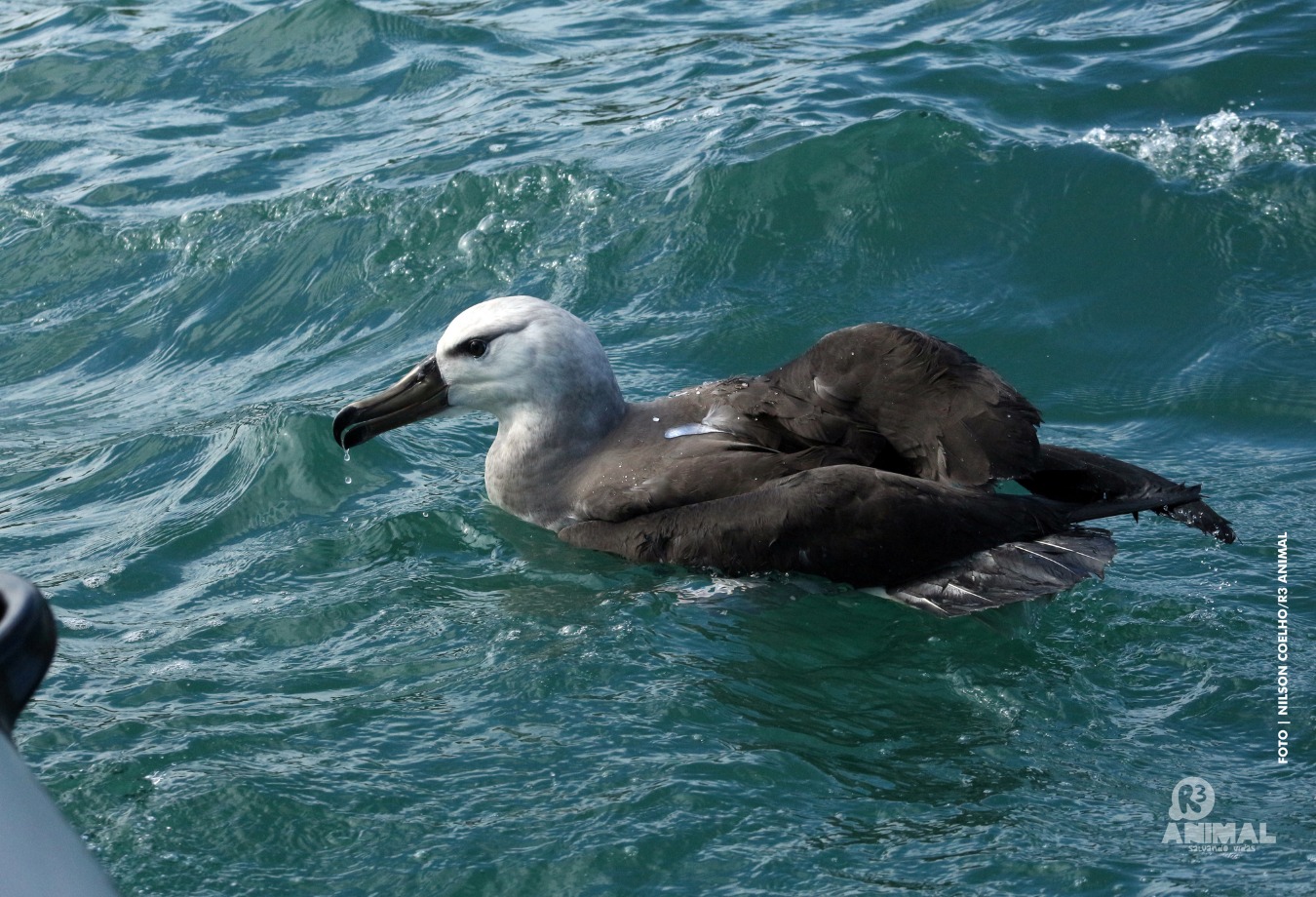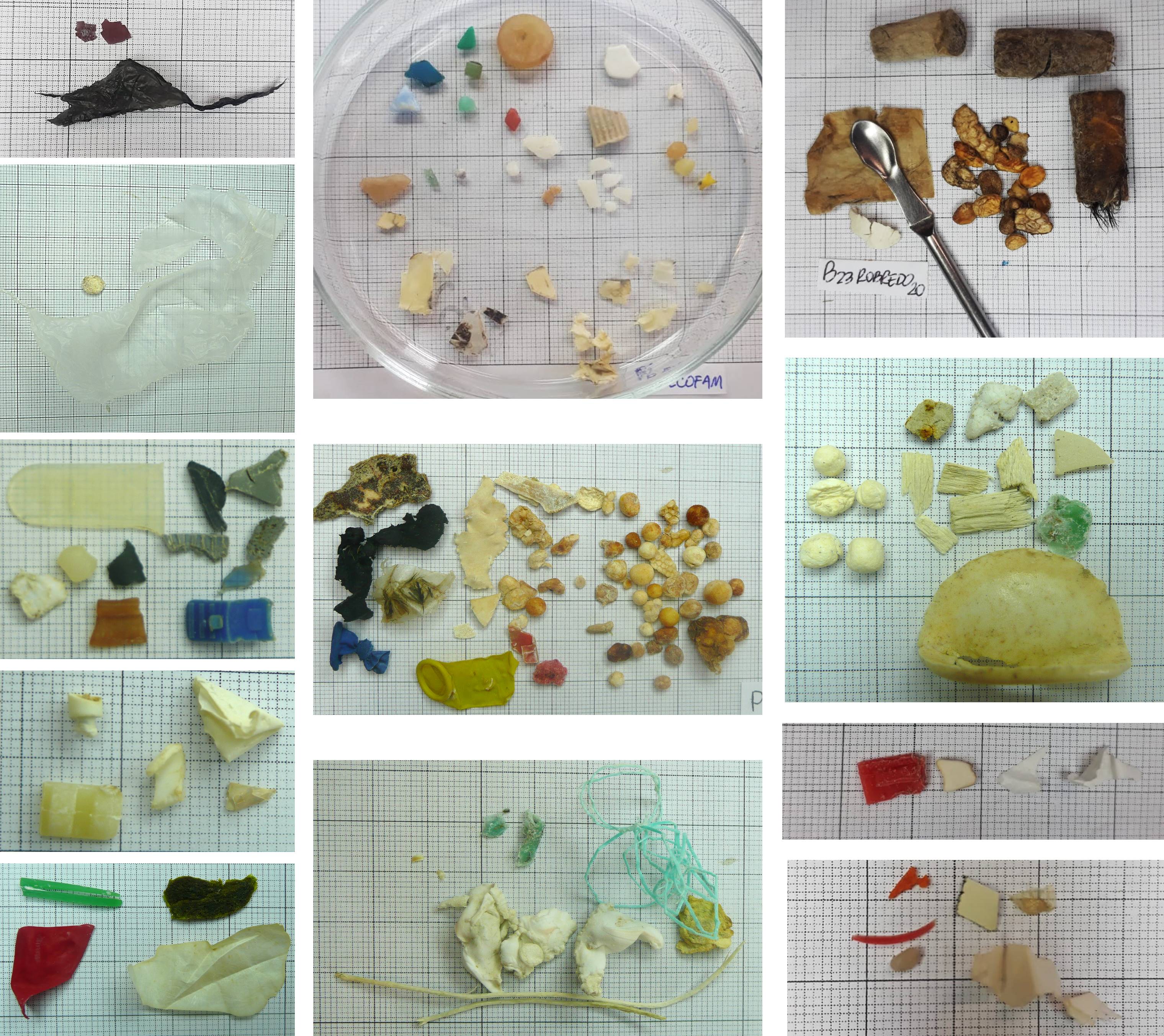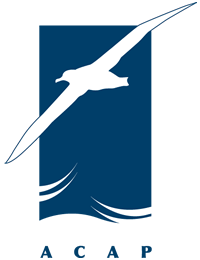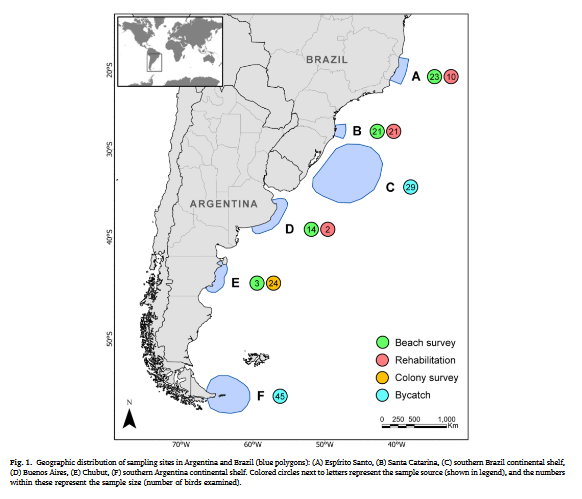Luciana Gallo (Instituto de Biología de Organismos Marinos, Puerto Madryn, Argentina) and colleagues have published in the Marine Pollution Bulletin on ingested plastic levels in 192 procellariiform carcasses examined. from the south-western Atlantic Ocean. Seven of the 17 species examined were ACAP-listed, including a single Critically Endangered Tristan Albatross Diomedea dabbenena, Among ACAP-listed species Black-browed Albatross Thalassarche melanophris (45) was the most abundant species examined, followed by Southern Giant Petrel Macronectes giganteus (36) and White-chinned Petrel Procellaria aequinoctialis (22).
 A juvenile Black-browed Albatross in Brazilian waters, photograph by Nilson Coelho
A juvenile Black-browed Albatross in Brazilian waters, photograph by Nilson Coelho
The paper’s abstract follows:
“Ocean pollution by plastics is a growing concern for marine wildlife conservation, and seabirds are particularly prone to ingest plastics. We report baseline information on plastic ingestion in 17 procellariiform species along the coast of Brazil and Argentina. Through a collaborative regional effort we found plastic items in 30.2 % of seabird carcasses examined (n = k192), comprised predominantly by mesoplastics (5–25 mm), user plastics, polypropylene, polystyrene and polyethylene. Considering the most representative source--site cohorts, the frequency of occurrence of plastic items varied significantly between sampling site and source of carcasses. Ingestion was highest in petrels and shearwaters. Immature birds ingested the largest number (and total mass) of plastic items followed by chicks and adults. Long-term programs applying standardized sampling protocols are needed to detect spatiotemporal patterns of plastic ingestion across species, and assess the potential effectiveness of remediation actions. Further studies are necessary to assess currently unrecognized health effects of plastic ingestion.”
 Plastic loads from studied birds
Plastic loads from studied birds
With thanks to Patricia Serafini.
Reference:
Gallo, L., Serafini, P.P., Vanstreels, R.E.T., Tamini, L.L., Kolesnikovas, C.K.M., Pereira, A., Neves, T., Nascimento, G.D., Rodriguez Pirani, L.S., Picone, A.L., Romano, R.M., Alvarez, , C.K., Chavez, L.N., Dellacasa, R.F. & Uhart, M.M. 2024, High frequency of plastic ingestion in procellariiform seabirds (albatrosses, petrels and shearwaters) in the Southwest Atlantic Ocean. Marine Pollution Bulletin 209(8) 117094.
John Cooper, Emeritus Information Officer, Agreement on the Conservation of Albatrosses and Petrels, 03 January 2025

 English
English  Français
Français  Español
Español 